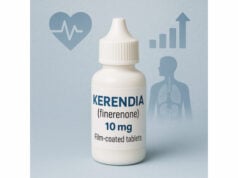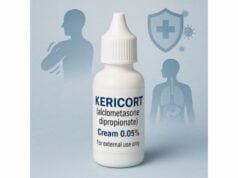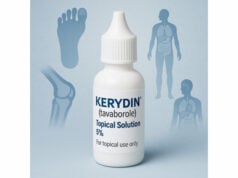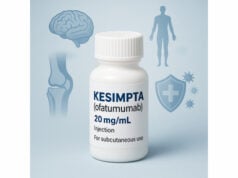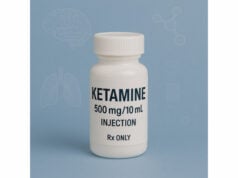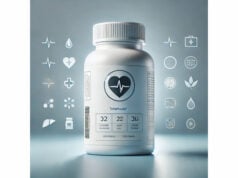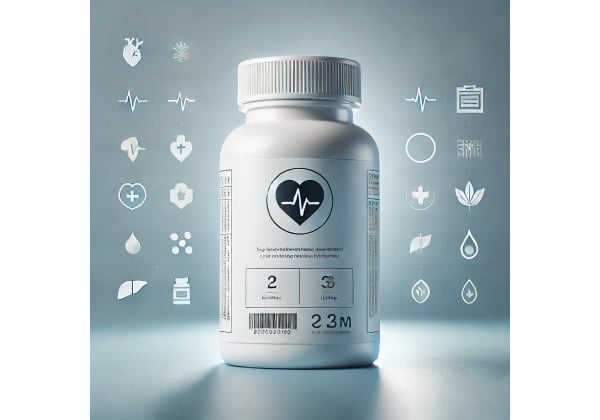
Ketek (telithromycin) is a ketolide antibiotic designed to treat community-acquired pneumonia (CAP) in adults when bacteria are the likely cause. It binds to bacterial ribosomes more strongly than classic macrolides, helping overcome certain resistance mechanisms in common respiratory pathogens. Because of rare but serious safety concerns—including liver injury, vision changes, fainting, and worsening of myasthenia gravis—Ketek is reserved for clearly indicated cases and used with careful screening and monitoring. This guide explains what Ketek is and how it works, when it may be appropriate, how to take it, the most important drug interactions, who should avoid it, and the evidence behind benefits and risks. You will also find practical tips to use it safely and to recognize warning signs early. The goal is straightforward: help you and your clinician weigh the pros and cons of Ketek and decide whether it fits your situation, while giving you concrete steps to reduce risk if it is prescribed.
Essential Insights
- Effective for adult community-acquired pneumonia caused by susceptible bacteria when used as directed.
- Typical adult dose: 800 mg once daily for 7–10 days, with or without food.
- Serious risks include liver injury, vision disturbances, fainting, and dangerous worsening of myasthenia gravis.
- Avoid if you have myasthenia gravis or a history of jaundice/hepatitis from macrolide-type antibiotics.
- Strong interactions with certain heart and cholesterol medicines; review all drugs with your clinician before starting.
Table of Contents
- What Ketek is and how it works
- Does Ketek work, and when to use it
- How to take Ketek: dosage and timing
- Drug interactions to know before starting
- Safety risks and who should avoid Ketek
- Evidence summary and key FAQs
What Ketek is and how it works
Ketek (generic name: telithromycin) belongs to a subgroup of macrolide-like antibiotics called ketolides. These drugs attach to the 50S subunit of bacterial ribosomes, halting protein synthesis so bacteria cannot grow and multiply. Compared with older macrolides, telithromycin binds at two sites on the ribosome, which can improve activity against macrolide-resistant strains of Streptococcus pneumoniae. That property makes Ketek a potential option for adult community-acquired pneumonia (CAP) when local resistance patterns and clinical judgment point to pathogens susceptible to telithromycin.
Where it fits
Ketek is approved for mild to moderate CAP in adults (18+). It is not a broad “respiratory antibiotic” for every cough or sinus issue and should not be used for viral infections such as the common cold or flu. In many regions, frontline choices for outpatient CAP include amoxicillin, doxycycline, or a macrolide depending on resistance rates; Ketek is considered when susceptibility and patient-specific factors suggest a benefit and the safety profile is acceptable.
Pharmacology basics
- Absorption and timing: Taken orally, once daily; food does not significantly change overall exposure.
- Distribution: Penetrates well into respiratory tissues and phagocytes, achieving concentrations above blood levels in some compartments.
- Metabolism and elimination: Metabolized primarily in the liver; eliminated through both biliary and renal routes.
- Half-life: Roughly 10 hours, supporting once-daily dosing.
Why the warnings?
Telithromycin’s structure includes a side chain that, while improving antibacterial binding, is also linked to side effects distinct from classic macrolides. Clinically, the important ones are acute liver injury (rare but can be severe), transient visual disturbances, syncope (fainting), and dangerous exacerbation of myasthenia gravis. These risks led to restricted indications and a prominent emphasis on screening, careful medication review, and patient counseling.
Bottom line
Ketek can be effective for CAP caused by susceptible bacteria, especially when resistance to other agents is a concern. Its benefits need to be balanced against specific, well-characterized risks and meaningful drug interactions. Appropriate use means treating the right infection, in the right patient, with the right safeguards.
Does Ketek work, and when to use it
Effectiveness in adult CAP
Clinical trials and post-marketing data show that telithromycin can achieve high clinical cure rates in outpatient, mild-to-moderate community-acquired pneumonia, including infections due to S. pneumoniae, H. influenzae, M. catarrhalis, Chlamydophila pneumoniae, and Mycoplasma pneumoniae. Activity against some macrolide-resistant pneumococci (often labeled MDRSP) is a core reason Ketek may be considered in select cases. It is not intended for severe CAP requiring hospitalization or suspected bacteremia; those scenarios demand different regimens and supportive care.
When clinicians consider Ketek
- Documented or likely susceptibility: Local antibiograms indicate pneumococcal resistance to standard macrolides but susceptibility to telithromycin.
- Adult patients who cannot use alternatives: Significant beta-lactam allergy or intolerance to first-line agents, with no contraindication to telithromycin.
- Adherence considerations: Once-daily dosing over 7–10 days can help some patients complete therapy.
When not to use it
- Nonbacterial or unclear infections: Viral respiratory illnesses, bronchitis without evidence of bacterial pneumonia, or self-limited conditions.
- High-risk comorbidities or drug conflicts: Patients with myasthenia gravis, a history of cholestatic jaundice or hepatitis from macrolides, or those on interacting medications that raise the risk of fainting, arrhythmias, or serious hepatic effects.
- Severe CAP or complicated infections: Hospital-level care with intravenous therapy and broader diagnostics is indicated.
What “success” looks like
Most patients start feeling better within 48–72 hours: fever falls, breathing becomes easier, and cough and chest discomfort diminish. A lack of clinical improvement after 72 hours—or worsening at any time—warrants prompt reassessment for complications (e.g., effusion), resistant organisms, incorrect diagnosis (e.g., viral pneumonia), or medication problems (e.g., poor absorption due to vomiting, interactions). Completing the full course helps prevent relapse and reduces resistance selection pressure.
Stewardship matters
Antibiotic stewardship is not just a hospital concern. Using Ketek only when indicated, at the right dose and duration, protects both the patient and the broader community by reducing resistance and adverse events. In practice, this means confirming the diagnosis of CAP, weighing alternatives, and reviewing safety red flags before prescribing.
How to take Ketek: dosage and timing
Adult dosing for community-acquired pneumonia
- Standard dose: 800 mg by mouth once daily (usually as two 400-mg tablets taken together).
- Duration: 7–10 days, depending on clinical course and clinician judgment.
- With or without food: Either is acceptable; choose a routine you can stick with.
Renal and hepatic considerations
- Kidney disease: In severe renal impairment (creatinine clearance < 30 mL/min), a reduced dosage is recommended; your prescriber will adjust based on renal function and overall risk.
- Combined kidney and liver impairment: Dose reduction is typically required.
- History of antibiotic-related jaundice/hepatitis: Do not use Ketek. A prior episode from any macrolide-type drug is a firm warning sign.
Missed doses and timing tips
- If you miss a dose by only a few hours, take it when you remember.
- If it is near time for the next dose, skip the missed one—do not double up.
- Set reminders and tie your dose to a consistent daily cue (e.g., after breakfast).
What to expect while taking Ketek
- Common effects: Nausea, diarrhea, dizziness, headache, altered taste. Most are mild and self-limited.
- Cautions: Do not drive or operate machinery if you experience visual blurring, trouble focusing, or lightheadedness—some people notice these effects when shifting gaze from near to far objects.
- Hydration and meals: Small, frequent sips and light meals can help if nausea occurs. Contact your clinician if vomiting prevents you from keeping doses down.
Stop and seek help immediately if you notice
- Signs of liver injury: unusual tiredness, nausea, loss of appetite, dark urine, pale stools, itching, right-upper-abdomen pain, or yellowing of skin or eyes.
- Fainting, severe dizziness, slow heart rate, or palpitations.
- Worsening breathing, muscle weakness, or new double vision—especially if you have known or suspected myasthenia gravis.
- Severe, persistent diarrhea (possible C. difficile infection), which can occur during therapy or up to two months after.
Finish the course
Stopping early can allow bacteria to rebound and fosters resistance. If side effects become difficult, call your prescriber rather than quitting on your own—many issues can be managed by supportive care or a switch to an alternative antibiotic when appropriate.
Drug interactions to know before starting
Telithromycin is both a substrate and an inhibitor of CYP3A4 and can affect transporters such as OATP1B1/1B3. Those properties create clinically important interactions. Always give your prescriber and pharmacist a complete list of prescription drugs, over-the-counter medicines, and supplements.
Medications that can be dangerous with Ketek
- Cisapride or pimozide: Do not combine; risk of serious heart rhythm problems.
- Colchicine with kidney or liver impairment: Combination can cause colchicine toxicity; avoid.
- Certain statins: Simvastatin, lovastatin, and atorvastatin should be stopped while taking Ketek due to increased risk of muscle injury and rhabdomyolysis; your clinician may substitute a non-CYP3A4 statin temporarily if lipid therapy must continue.
- Strong CYP3A4 inhibitors/inducers: Potent inhibitors (e.g., ketoconazole, clarithromycin, some HIV protease inhibitors) can raise telithromycin levels; potent inducers (e.g., rifampin, carbamazepine, phenytoin) can lower levels and reduce effectiveness. Your prescriber will avoid or adjust as needed.
- Calcium channel blockers (e.g., verapamil, diltiazem, amlodipine): Risk of low blood pressure, slow heart rate, and fainting increases with concurrent use; close monitoring and dose adjustments may be necessary.
- Other QT-prolonging agents: Combining multiple QT-prolonging drugs (certain antiarrhythmics, antipsychotics, and others) can raise arrhythmia risk, especially in people with electrolyte abnormalities or structural heart disease.
Practical interaction tips
- Bring the list: Keep an updated medication list on your phone or a card.
- Ask before you add: Do not start or stop any medicine while on Ketek without checking first.
- Alcohol and sedatives: Minimize or avoid; they can worsen dizziness and fainting risk.
- Supplements: St. John’s wort can reduce levels of many drugs via enzyme induction; mention all supplements and herbal products.
- Electrolytes and hydration: Low potassium or magnesium increase abnormal rhythm risk. If you are on diuretics, discuss monitoring.
If you already take interacting drugs
Prescribers sometimes pause or substitute the conflicting medicine temporarily and restart it after the antibiotic course. For example, switching from simvastatin to a non-CYP3A4 statin (such as pravastatin) during therapy may be appropriate—your clinician will decide based on your cardiovascular risk and the short course of antibiotic treatment.
Safety risks and who should avoid Ketek
Who should not take Ketek
- Myasthenia gravis: Ketek can trigger severe, sometimes fatal, worsening of respiratory muscle weakness.
- History of jaundice or hepatitis from macrolide-type antibiotics: Risk of recurrent liver injury is significant.
- Known allergy to telithromycin or macrolide antibiotics.
- Concomitant cisapride or pimozide; colchicine with kidney or liver impairment.
Use with extra caution or specialized oversight
- Active liver disease or prior unexplained hepatitis: Even without prior macrolide-related jaundice, risk–benefit should be scrutinized; baseline and symptom-triggered labs are prudent.
- Cardiac risk: Existing QT prolongation, bradycardia, recent syncope, or uncorrected low potassium/magnesium increase arrhythmia risk—opt for alternatives when possible.
- Older age or multiple comorbidities: Polypharmacy heightens interaction risks; watch for dizziness and visual changes that can lead to falls.
- Pregnancy and breastfeeding: Human data are limited; discuss alternatives with your obstetric clinician.
- Severe renal impairment or combined renal/hepatic impairment: Dose adjustment and closer follow-up are required.
Common adverse effects
- Gastrointestinal: Nausea, vomiting, diarrhea, abdominal discomfort.
- Neurologic/sensory: Dizziness, headache, altered taste; transient visual blurring or difficulty shifting focus between near and far objects.
- General: Fatigue or malaise during early therapy.
Serious adverse effects (seek urgent care)
- Liver injury: Telltale signs include dark urine, pale stools, itching, right-upper-abdomen pain, jaundice, marked fatigue, or sudden loss of appetite. These can occur even after a few doses or shortly after finishing therapy.
- Syncope and bradycardia: Especially when combined with certain heart medicines.
- Severe diarrhea or bloody stools: Possible Clostridioides difficile colitis, which may appear during therapy or weeks later.
- Allergy: Hives, swelling of lips/tongue, or trouble breathing require emergency evaluation.
Monitoring and self-care
- Before starting: Review your history, medications, and allergies; discuss alternatives if you have any red flags above.
- During treatment: If you develop visual symptoms or feel faint, avoid driving and hazardous tasks; rest until symptoms resolve and call your clinician.
- After treatment: Watch for late-onset diarrhea or signs of liver trouble for several weeks. Prompt reporting allows earlier intervention.
Risk–benefit recap
For the right adult with bacterial CAP and no red flags, Ketek’s once-daily dosing can be convenient and effective. Because serious adverse events, though rare, can be life-threatening, strict attention to contraindications, interactions, and early symptom reporting is essential.
Evidence summary and key FAQs
What evidence supports Ketek for CAP?
Randomized and open-label studies in adults with mild-to-moderate outpatient CAP showed high clinical success rates with once-daily telithromycin. Efficacy against macrolide-resistant pneumococcus was a defining feature in microbiology analyses. Those studies enrolled patients appropriate for oral outpatient therapy—not individuals with severe pneumonia or sepsis.
Why is there so much emphasis on safety?
Post-marketing surveillance and clinical experience identified rare but serious adverse reactions—especially acute liver injury, visual disturbances, syncope, and marked worsening of myasthenia gravis. These findings led to restricted use focused on adult CAP, explicit contraindications, and detailed interaction warnings. More recent research in drug-induced liver injury continues to flag macrolide-related signals, with telithromycin a notable example, reinforcing the importance of careful patient selection.
How long does it take to feel better?
In uncomplicated CAP treated appropriately, many adults start to improve within 48–72 hours: fever falls, appetite returns, and breathing eases. Cough and fatigue may persist longer. If you are not improving by day three—or you are worsening at any point—contact your clinician for reassessment.
Can I take Ketek if I am on heart or cholesterol medication?
Maybe—but only with a prescriber’s guidance. Certain combinations are unsafe (e.g., simvastatin or pimozide). Some medicines can be paused or switched temporarily; others are incompatible. Never make changes on your own; coordinate a plan in advance.
Do I need lab tests?
Most otherwise-healthy adults treated for a short course do not need routine labs. Your clinician may order baseline or follow-up tests if you have risk factors (previous liver issues, polypharmacy, symptoms emerging during therapy) or if your case is complicated.
What if I develop diarrhea?
Mild loose stools are common on antibiotics. Severe, watery, or bloody diarrhea—especially with cramping and fever—can signal C. difficile colitis and needs prompt medical evaluation, even if it starts weeks after finishing the antibiotic.
Is Ketek used in children?
No. Ketek is approved for adults 18 years and older for CAP. Pediatric treatment choices follow different evidence and dosing.
What else should I do while taking Ketek?
Rest, hydrate, and follow guidance on fever control and cough care. Avoid alcohol, limit sedatives, and do not drive if you experience visual symptoms or dizziness. Complete the full course unless your clinician changes the plan.
Key take-home
Ketek can be a useful option for adult CAP caused by susceptible bacteria when alternatives are unsuitable. Its safe use depends on strict attention to contraindications, interactions, and early recognition of warning signs. Shared decision-making with your clinician—grounded in your history, medicines, and local susceptibility patterns—ensures Ketek is used only when the expected benefit outweighs the risks.
References
- DailyMed – KETEK- telithromycin tablet, film coated 2024 (Label)
- KETEK® (telithromycin) Tablets 2012 (Medication Guide)
- Drug-Induced Liver Injury in Patients With Chronic Liver Diseases 2025 (Review)
- Natural History of Idiosyncratic Drug-Induced Liver Injury: Current Evidence 2025 (Review)
- Analyzing the Mechanisms Behind Macrolide Antibiotic Hepatotoxicity 2019 (Mechanisms Review)
Disclaimer
This guide is educational and does not replace medical advice. Ketek has specific contraindications and significant interaction risks. Do not start, stop, or change any medication without talking to a qualified healthcare professional who can review your medical history, current medicines, and local treatment guidelines. Seek urgent care if you develop symptoms of liver injury, fainting, severe diarrhea, allergic reactions, or breathing problems.
If this article helped you, please consider sharing it on Facebook, X (formerly Twitter), or any platform you prefer, and follow us for future updates. Your support helps us continue creating reliable, evidence-based health content.

